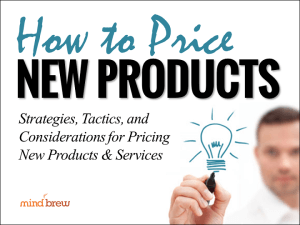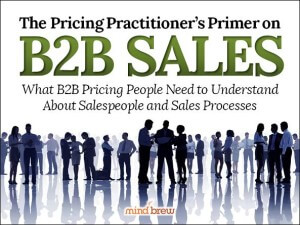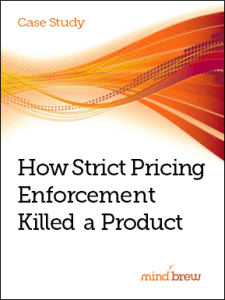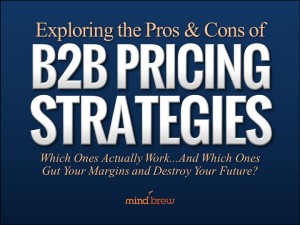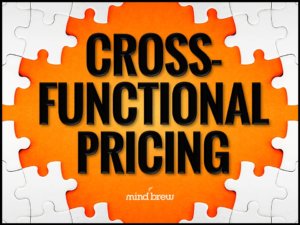Psychologists say that when we meet someone new, we form our first impression of that person in just a tenth of a second. And other researchers have found that the effects of a first impression tend to influence all our future interactions with a person.
Something very similar happens when people encounter a new product or service for the first time. That’s why businesses pay so much attention to a product design, packaging, branding and advertising.
But there’s another aspect of a product that can also have a huge impact on a product or service’s first impression. And because this is PricingBrew, you’ve probably guessed by now that we’re talking about its price.
It’s particularly difficult to price an offering effectively when it’s brand new to your company and to the market as a whole. After all, if there are no other products like yours, you don’t have any existing data to use as a basis for pricing decisions.
All too often B2B pricing professionals are brought into the new product development process very late in the game, and they aren’t given the information they need to come up with an effective pricing plan. In some cases they may be expected to implement a pricing strategy developed by the product management team. That strategy may based on little more than an internal poll of what everyone in the office thinks the product should cost.
Looming product release deadlines and pressure from other parts of the company can make it seem tempting to take shortcuts and base new product pricing on educated guesses rather than doing the hard work required to create a value-based pricing plan. But you only get one chance to make that first impression—do you really want to leave it up to guesswork?
Here are nine signs you’ve taken the wrong approach to new product pricing:
- No value-based approach. A value-based approach means developing a hypothesis about how your product will deliver value to your customers, testing that hypothesis with research, analyzing how your value stacks up to the alternatives, crafting a “value story,” and telling that story effectively first to the sales team and then to the customers through your advertising and marketing. If you’ve skipped any of those steps, you could be headed for trouble.
- Internal perspectives only. No matter how well your internal experts know the market, their opinions can’t substitute for input from actual customers.
- Relying on too few customers. If you create a product and pricing strategy based on conversations with one or two customers, you may end up with a product that has a total market of only one or two organizations.
- No competitive alternatives. Even if there is nothing else like your product on the market, customers always have the option of doing nothing. Buying decisions are always competitive, so you have to make an argument for why your products and services provide better value than any alternative.
- Weak, shallow value story. A good value story isn’t really about your product—it’s about the customers. To be effective that value story must be based on a thorough understanding of their needs.
- Lack of basic segmentation. Every product provides a different level of value to different types of customers. If you’ve developed a one-size-fits-all pricing strategy, you’re probably leaving dollars on the table.
- No thought to takeaways. There will always be a few customers who ask for a lower price as a negotiating tactic. Give your sales team something they can take away from the product package in order to justify a lower price.
- Incomplete sales training. Your sales team doesn’t just need to know the speeds and feeds of the product, they need to understand the value story so they can present it to customers effectively.
- Lack of evidence and proof. Most customers aren’t just going to take you at your word when you say this is a fair price. Give them the documentation they need to prove the value of your offering to themselves and to their bosses.
For more strategies, tactics and things to consider for new product pricing, check out the online training session titled “How to Price New Products.”

